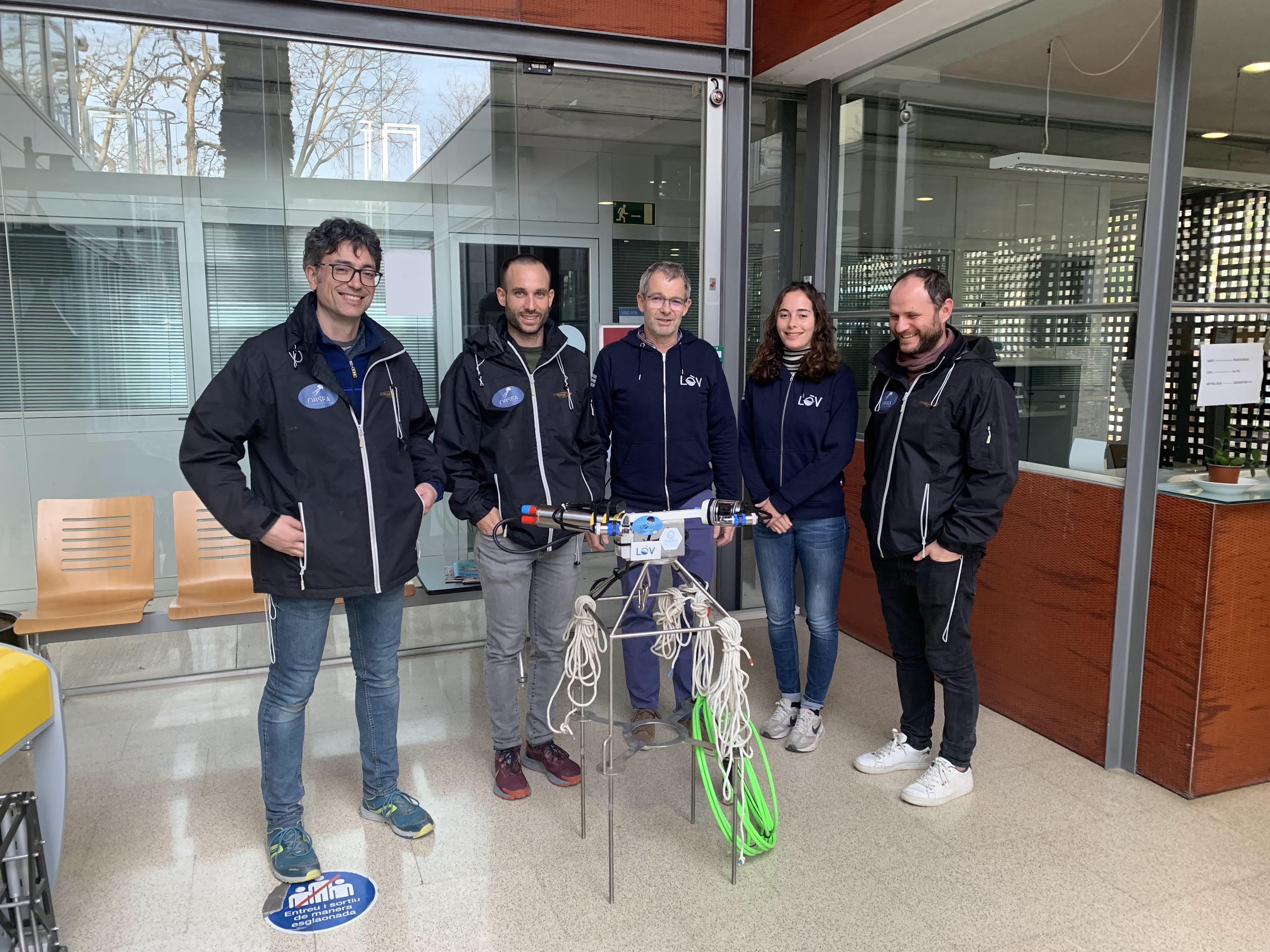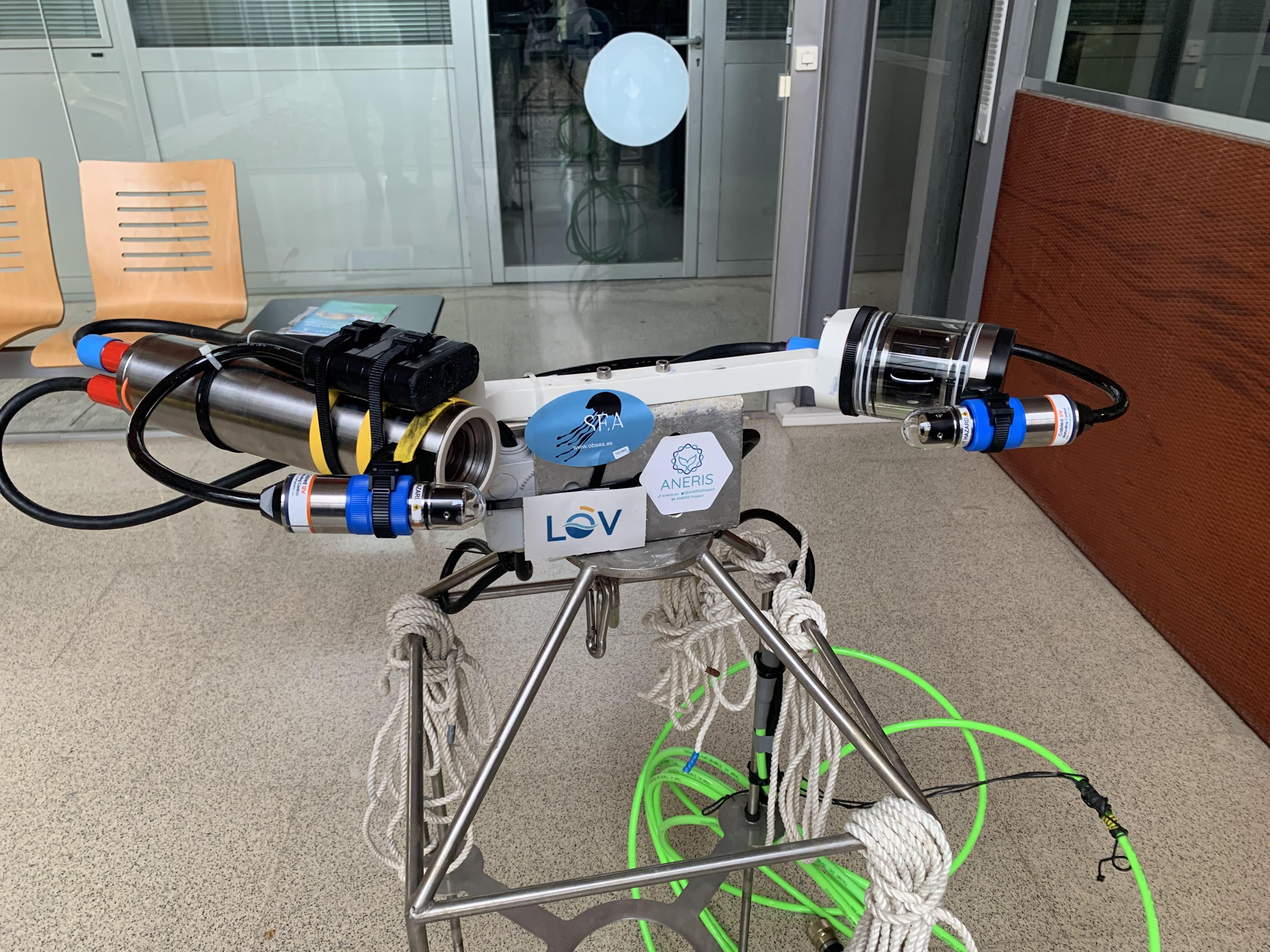
Deployment of the UVP6 Vision profiler at the OBSEA seafloor observatory
This February, the ANERIS team at SARTI-UPC and LOV: Laboratoire d'Océanographie de Villefranche (CNRS & Sorbonne University) is celebrating the deployment of the Underwater Vision Profiler (UVP6) at the OBSEA cabled seafloor observatory. After comprehensive testing inside the pressure tank at UPC, it was deployed at OBSEA under LOV’s supervision at 18 meters depth.

The UVP6 tool, patented by CNRS, is designed to study large (>100 µm) particles and zooplankton simultaneously, by quantifying their number and type in a known volume of water. The system makes use of computerized optical technology with custom lighting to acquire digital images of zooplankton in-situ at depths down to 6000m.

Once installed, the UVP collects in-situ images, counts and sizes particles larger than ~100µm and extracts regions of interest (ROIs) for larger particles (>~1mm). This data is then fed into a pipeline of two applications - EcoPart for pre-processing and EcoTaxa for taxonomic identification. Due to the large size of the generated datasets, ANERIS aims to automate the pipeline so it requires minimal input and validation from researchers.
Future deployments are planned for two EMSO moorings, as well as the SmartBay cabled observatory in Galway, Ireland. The network of UVPs together with the updated EcoPart and EcoTaxa applications will generate and process data contributing to the AIES-ZOO technology of ANERIS for automated information extraction of zooplankton images.